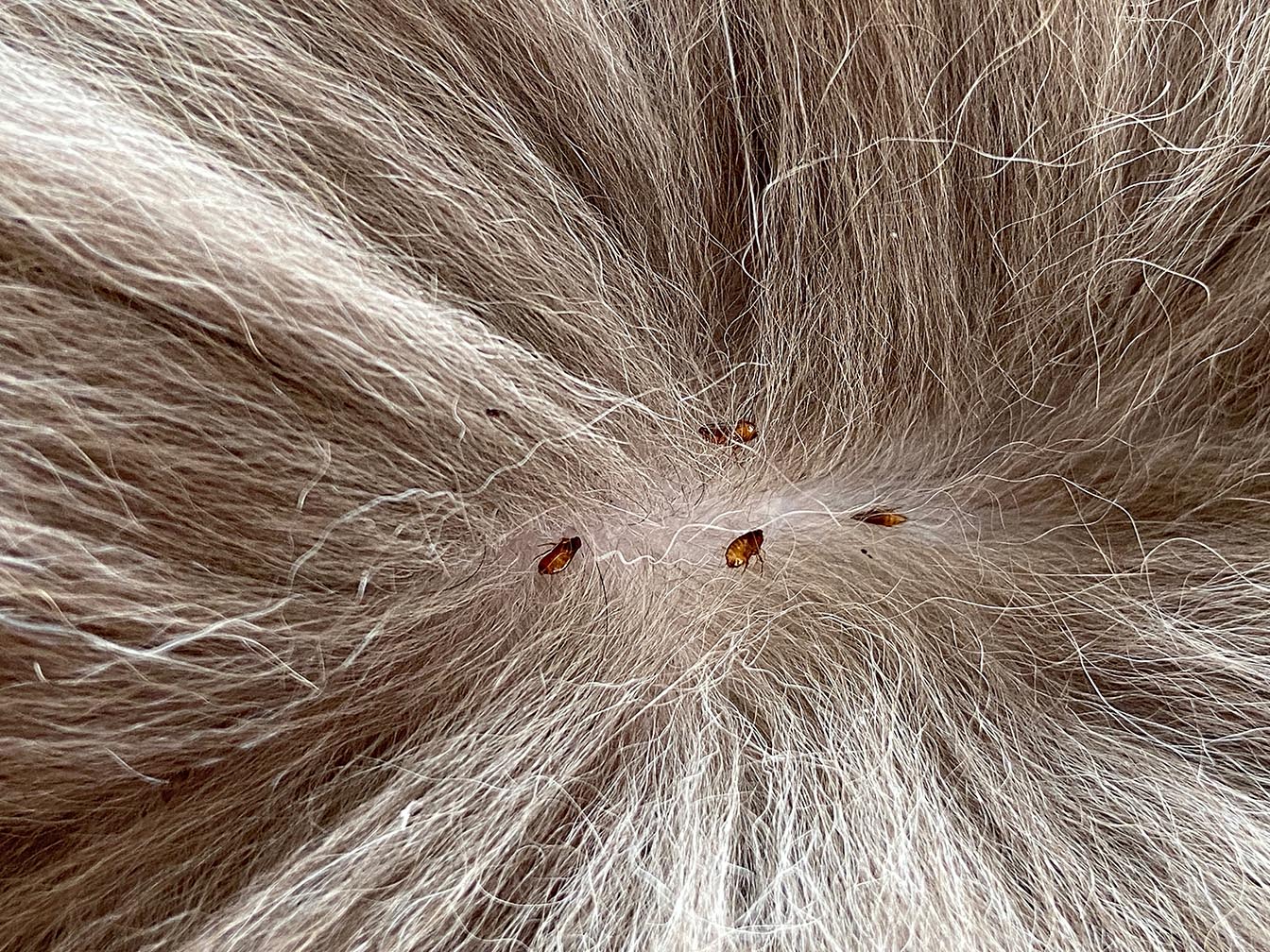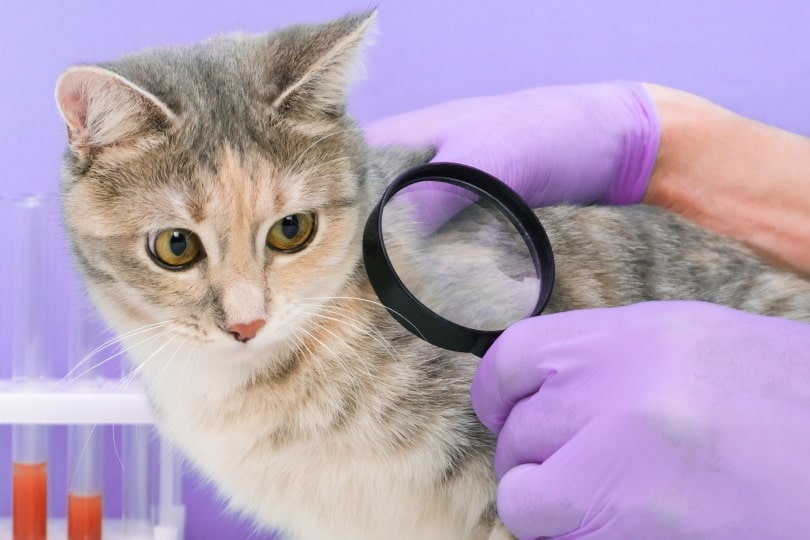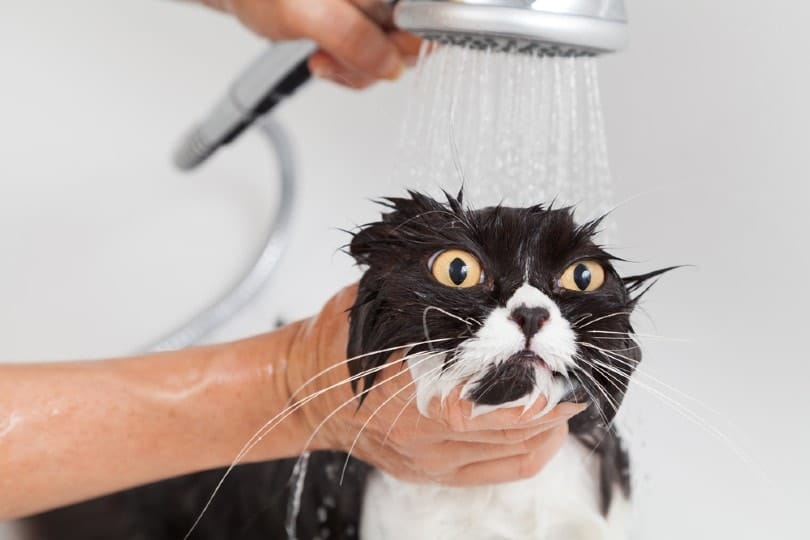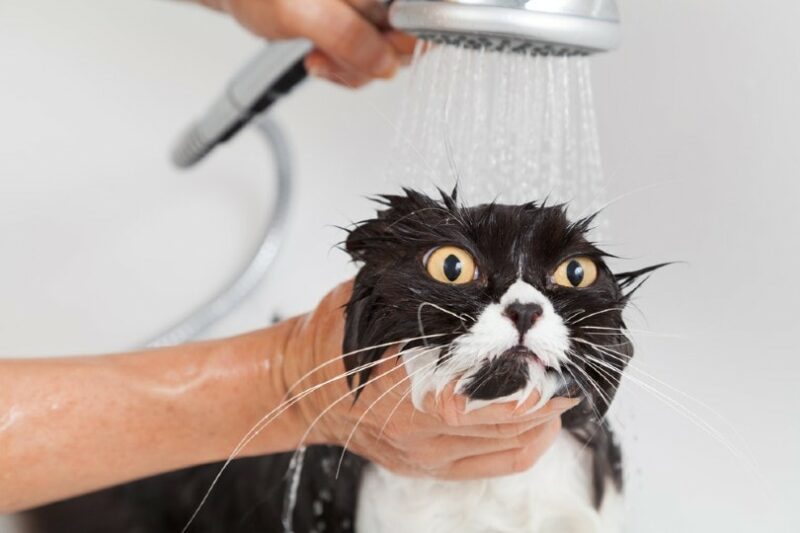Having a cat in your life is wonderful, but it sometimes comes with a catch: dealing with fleas. Apart from being annoying, flea infestations can trigger allergies, irritation, and even illness. So, getting rid of them as quickly as possible is in everyone’s best interest.
Several home remedies are available, and sometimes it isn’t easy to distinguish fact from fiction. So, how well does hot water kill fleas on a cat? Hot water doesn’t kill fleas, so don’t use this to treat fleas on your cat.

How to Tell That Your Cat Has Fleas
If you’ve never dealt with fleas, you might wonder what signs to look for. Your cat might be restless and itchy. When you part their fur, their skin might look red and irritated, and you may even see small black specks. The best place to search for fleas or flea dirt (flea poop) is on their back or necks since they congregate in hard-to-reach areas.
Fleas aren’t picky, so if you have other pets, check them for signs of infestation. If you suspect your pet has fleas, your first point of call should be your veterinarian. You can discuss the next steps in your cat’s treatment plan. This is crucial, as home remedies or information you find online can be unsafe.

Why Doesn’t Hot Water Kill Fleas?
Water alone will not kill fleas because they can survive for around 24 hours if you manage to submerge them in water. Further, most of the flea life cycle is not on your cat, but rather in your home or environment. These forms of the flea simply aren’t easily treated with water.
How Effective Is Hot Water in Getting Rid of a Flea Infestation?
The lifecycle of a flea is incredibly complex, which means getting rid of them from your home can be tricky. There are typically four life stages: egg, larva, pupa, and adult. During the pupa stage, they are protected from repellents and insecticides for days, weeks, or however long they deem safe because an adult won’t emerge until there is a host close by, which they will sense by their body heat or movement.
This means getting rid of the fleas on your cat or any other pets in the home is only one part of a long journey.
A soapy bath may help remove the fleas on your cat, but it’s often ineffective since the flea population resides in your carpet, molding, linens, and anywhere your cat spends time in your home. There are several commercial pesticides and DIY formulas targeting fleas, but the best technique is to get a flea preventative from your veterinarian and have a professional pest control service treat your home for the pests.
When you contact an exterminator, be sure to mention you have pets, so they use pet-safe chemicals. Your pets and family must move to another location while the technicians treat your home.

Final Thoughts
Hot water is not an effective flea treatment, therefore, it should never be used to treat fleas on your cat. However, a warm soapy bath can provide temporary relief for your pet by removing the adult fleas. It’s important to speak to your vet about treatment methods and preventative solutions for keeping fleas out of your home since it’s the safest and most effective method for treating your cat. Eliminating an infestation is complicated, thanks to the fleas’ complicated lifecycle, but with the help of your vet and pest control expert, you can kill the fleas and help your itchy feline.
See also:
- Does Sevin Dust Kill Fleas on Cats? Vet Reviewed Risks & Safety Explored
- Cat Stung by Bee or Wasp? Here’s What to Do (Vet Answers)
Featured Image Credit: 135pixels, Shutterstock












